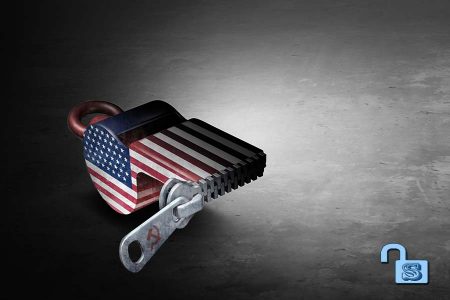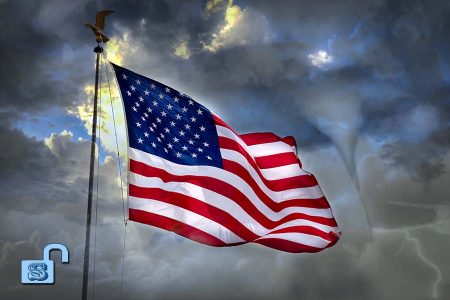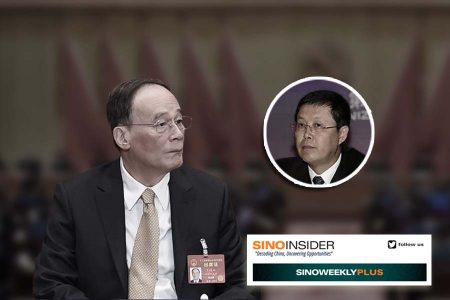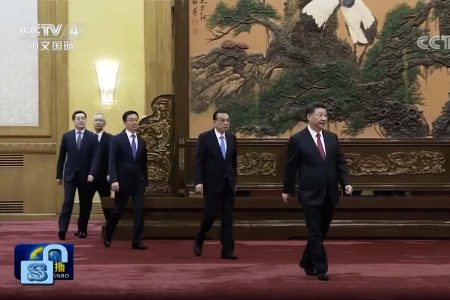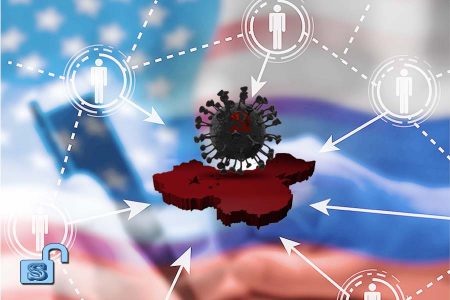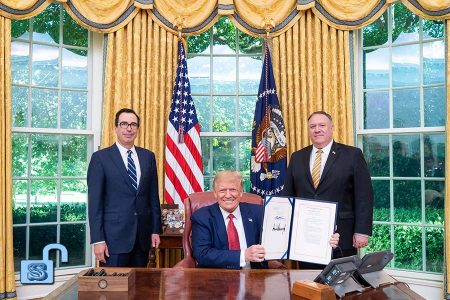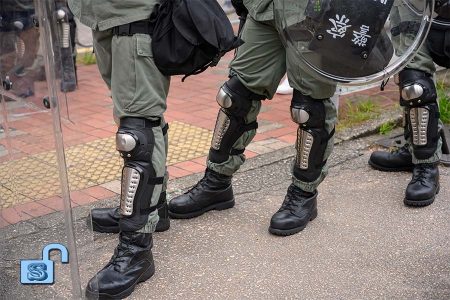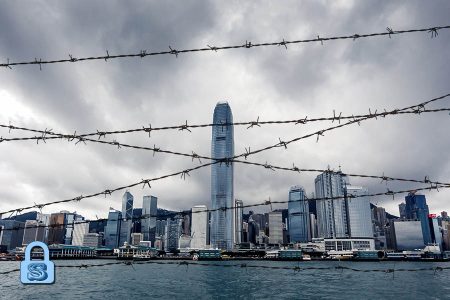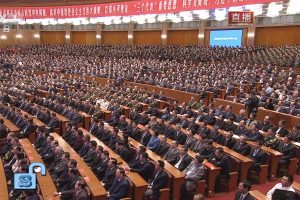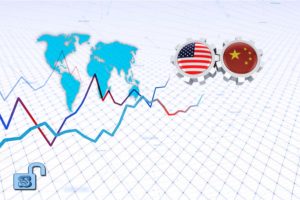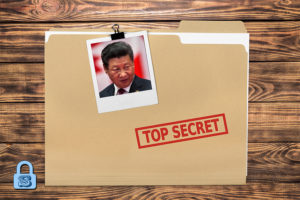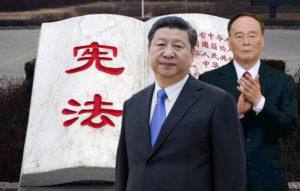◎ 58 of our 78 predictions (over 70 percent) have been verified.
In our China 2020 Outlook published on Dec. 31, 2019, we made 78 predictions covering eight categories: politics, the economy, military, society, Hong Kong, cross-strait relations, Sino-U.S. relations, and China and the world.
Of our 78 predictions, 55 were verified for a forecasting accuracy of over 70 percent.
Key forecasts include:
- The spread of COVID-19 across China and the CCP’s draconian lockdown measures.
- Intensifying factional struggle resulted in criticisms against Xi Jinping by high-profile CCP elite; the defection of pro-Jiang CCP official Cai Xia; and the purge of Sun Lijun, Deng Huilin, and Gong Daoan.
- Several prominent Chinese internet companies failed in 2020, including Baicheng.com, Choushou TV, and “Xuebajun.”
- Xi continued to groom and promote a new military leadership guard, notably handling exceptional promotions to Guo Puxiao, Zhang Xudong, Li Wei, and Wang Chunning.
- The CCP tightened its grip over Hong Kong and arrested prominent pro-democracy activists like Jimmy Lai, Joshua Wong, and Agnes Chow.
- Taiwan’s international profile grew substantially as a result of Trump administration policies.
- Under the Trump administration, U.S. efforts to stymie the CCP ramped up across the board.
- Our forecasting accuracy is built on our research and analysis of CCP elite politics. Party elite politics is upstream of virtually all matters in the People’s Republic of China, and factional struggles within the Communist Party are the core of elite politics.
Businesses, investors, and governments who wish to sidestep risks and seize opportunities in China must track CCP elite politics.
1. Factional struggle in the CCP elite will be even fiercer in 2020 as compared to 2019. Xi Jinping faces very high levels of personal political risk; his political opponents could use a variety of ways to attack him, including leaking damaging information, assassination attempts, economic coups, and political coups. VERIFIED
- January
Jan. 30: Kong Qingdong, a Peking University professor with radical left views, posted a poem on Weibo critical of the Chongzhen Emperor that was aimed obliquely at Xi Jinping, and hinted that rebels are preparing to overthrow Xi.
- February
Late February: An article titled “The People’s Lives Are Harmed by the Virus and the System” by influential businessman Ren Zhiqiang made the rounds on the internet. In the article, Ren described Xi Jinping as a “clown with no clothes who is still determined to play the emperor.”
Feb. 28: In another poem on Weibo, Kong Qingdong likened Xi Jinping to a “bird in a cage” and implied that the latter had surrendered to the U.S. in the trade war.
- March
March 21: Chen Ping, the chairman of Sun TV in Hong Kong, shared a “proposal” on his WeChat account that called for an enlarged meeting of the Politburo to be held to “discuss the problem of Xi Jinping” and deliberate his ouster.
March 25: Information widely circulated on the Chinese internet claimed that Jack Ma, Liu Chuanzhi, and several other Chinese business leaders submitted to Li Keqiang an open letter addressed to Xi Jinping. The letter contained nine major requests, including the release of Ren Zhiqiang.
March 26: Information widely circulated on the Chinese internet claimed that five CCP elders, Li Ruihuan, Wen Jiabao, Li Lanqing, Hu Qili, and Tian Jiyun, had submitted a letter to Party Central. Xi Jinping reportedly had no choice but to respond to the letter during a CCP Politburo meeting on March 27.
- May
Early May: Information widely circulated on the Chinese internet claims that Deng Pufang, the son of Deng Xiaoping, sent a letter to delegates at the CCP Two Sessions questioning the Xi Jinping leadership’s actions.
- June
June 16: A number of Hong Kong and Taiwanese media outlets published a list of assets in the U.S., Australia, New Zealand, Hong Kong, and other countries that purportedly belong to Politburo Standing Committee member Han Zheng. The media outlets also exposed Han’s mistresses and illegitimate children.
2. Both active and retired Party or state leaders could be investigated.
3. Active Central Committee members (full or alternate) and officials at the ministerial level could be investigated. VERIFIED
- April
April 19: Sun Lijun, a vice minister of public security, was officially investigated by the Central Committee for Discipline Inspection and the National Supervisory Commission.
- December
At least 18 PRC officials at the vice ministerial rank and above were investigated by December 2020, according to publicly available information.
4. Officials from the following apparatuses are at high risk of being purged: Political and legal affairs, propaganda, intelligence, finance, and Hong Kong and Macau affairs. VERIFIED
- January
Jan. 4: Hong Kong Liaison Office director Wang Zhimin is transferred out to the Central Committee’s Institute of Party History and Literature to serve as the institute’s vice president.
- February
Feb. 13: Zhang Xiaoming, the director of the Hong Kong and Macau Affairs Office (HKMAO), was demoted to deputy director with responsibilities over daily operations.
- April
April 19: Sun Lijun was investigated.
- June
June 14: Deng Huilin, deputy mayor of Chongqing and director of the Chongqing Public Security Bureau, was investigated.
- August
Aug. 18: Gong Daoan, deputy mayor of Shanghai and director of the Shanghai Public Security Bureau, was investigated.
- October
Oct. 24: Wang Like, member of the Jiangsu provincial Party Committee and Jiangsu Political and Legal Affairs Commission, was investigated.
5. More CCP officials could attempt to defect and expose the regime’s dirty secrets. VERIFIED
- June
Early June: Cai Xia, a former CCP Central Party School professor, went into exile in the United States after she ran afoul of the PRC authorities for calling Xi Jinping a “mafia boss” and describing the CCP as a “political zombie.”
- August
Aug. 19: Li Chuanliang, a former deputy mayor of Jixi City in Heilongjiang Province who fled to the U.S., exposed the CCP regime’s scandals and publicly quit the Party during an interview with The Epoch Times.
6. The CCP could restrict cadres and civil servants from leaving the country, such as by withholding their passports. VERIFIED
- April
Early April: The CCP government mandated that all government departments and state-owned enterprises should “recover” the passports of their employees/civil servants.
- June
June 20: The CCP announced a set of administrative penalties for civil servants (《公務員行政處罰法》). Per regulations, CCP members who travel abroad without permission can be demoted or expelled, while members who “illegally” obtain permanent residency abroad can also be removed from their post or expelled.
7. Xi’s allies or supporters in key positions may lose their jobs as a result of factional struggle in the CCP elite.
8. Regime-threatening Black Swans will likely emerge in the second half of 2020.
1. China’s economy will worsen on all fronts, and key economic indicators could hit historic lows. VERIFIED
- December
In 2020, total retail sales of consumer goods in China fell by 4.78% in absolute terms to 39.1981 trillion yuan, the first contraction in more than a decade. Retail sales of consumer goods other than automobiles fell 4.1% to 35.2566 trillion yuan. The steepest drop in retail sales came in the January-February period (minus 20.5%).In 2020, national consumer prices in China rose by 2.5% over the previous year, with food prices rising by 10.6% (up 38.4% for meat) and non-food prices by only 0.4% ( minus 3.5% for transportation and communications). National consumer prices rose the highest in January (up 5.4%).
In 2020, national per capita consumer spending in China fell 1.6% in nominal terms from a year ago to 21,210 yuan. After deducting price factors, national per capita consumer spending fell 4% in real terms.
In 2020, per capita disposable income in China saw a nominal increase of 4.7% from 2019 and a real increase of 2.1% (lower than the 2.3% GDP growth rate in 2020).
Passenger car production and sales in China in 2020 was 199.94 billion units (minus 6.5% YoY) and 201.78 billion units (minus 6% YoY) respectively. 2020 marked the third consecutive year of contractions in China’s automobile market.
China shipped 307.9 million cellphones in 2020, down 20.8% from a year ago.
China’s total fixed asset investment in 2020 was 51.8907 trillion yuan, down 5.9% in absolute terms year-on-year and down 17.9% from 2017.
2. The PBoC will continue to ease monetary policy. VERIFIED
- January
Jan. 1: The People’s Bank of China announced it will lower the reserve requirement ratio (RRR) for financial institutions by 50 basis points on Jan. 6, releasing 800 billion yuan in long-term funds.
- March
March 13: The People’s Bank of China cut the reserve requirement ratio for banks by 0.5 to 1 percentage points, freeing up an additional 550 billion yuan in funds.
- April
April 3: The People’s Bank of China lowered the required reserve ratio for rural banks and small city commercial banks by 1 percentage point, releasing 400 billion yuan of liquidity.
April 7: The People’s Bank of China reduced the excess reserves for financial institutions from 0.72 percent to 0.35 percent, the first time the interest rate was lowered since Nov. 2008.
- December
From August to December, the People’s Bank of China renewed medium-term lending facility (MLF) loans in consecutive months, with a net injection of 350 billion yuan, 400 billion yuan, 300 billion yuan, 400 billion yuan, and 350 billion yuan respectively per month.
The PRC’s M2 money supply was 218.68 trillion yuan in 2020, up 20.03 trillion yuan from 198.65 trillion yuan in December 2019.
3. The PRC will significantly open up China’s financial markets. VERIFIED
- January
Jan. 1: Restrictions on foreign shareholding in Chinese futures companies were fully lifted.
- April
April 1: Restrictions on foreign shareholding in Chinese securities and fund management firms were fully lifted.
- May
May 7: The People’s Bank of China and the State Administration of Foreign Exchange issued a set of regulations on the management of domestic securities and futures investment funds by foreign institutional investors (《境外機構投資者境內證券期貨投資資金管理規定》). Per the regulations, the securities investment quota for qualified foreign institutional investors in China will be abolished, while registration management for cross-border capital remittance and exchange will be implemented.May 11: The CCP Central Committee and the PRC State Council issued an opinion on “accelerating the improvement of the socialist market economy system in the new era” (《關於新時代加快完善社會主義市場經濟體制的意見》) to increase the opening up of China’s economy.
- December
Dec. 1: Restrictions on foreign shareholding ratios in Chinese securities companies were abolished.From September to December, the State Administration of Foreign Exchange issued three rounds of Qualified Domestic Institutional Investor (QDII) quotas, granting 71 institutions $12.716 billion.
4. The PRC could issue upwards of 1 trillion yuan worth of special government bonds. VERIFIED
- March
March 27: A meeting of the Politburo called for the issuance of “government special bonds” (or “special treasury bonds”).
- May
May 22: The CCP government work report projected that China’s 2020 deficit rate will be 3.6 percent, the size of China’s fiscal deficit will increase by 1 trillion yuan over 2019, and 1 trillion yuan worth of special treasury bonds will be issued.
5. China could continue to reduce its holdings of U.S. Treasuries. VERIFIED
- March
In March, China reduced its holdings of U.S. Treasury bonds by $11 billion.
- December
Dec. 15: The U.S. Treasury Department announced that China had reduced its holdings of U.S. Treasurys in October to $1.054 trillion, the lowest since January 2017. China had been reducing its load of U.S. Treasurys for five consecutive months.
6. China’s foreign exchange reserves could continue to shrink.
7. China could see heavy capital outflows. VERIFIED
- September
In the first three quarters of the year, China’s balance of payments, net errors and omissions (implicit “illicit capital flight”) amounted to minus $948.6.
- December
In December, China’s central bank foreign exchange balance decreased 100.916 billion yuan year-on-year to 21.13081 trillion yuan. In comparison, the central bank’s foreign exchange balance dropped 23.942 billion yuan from 2018 to 2019.
In 2020, China’s exports total $2.59 trillion according to the PRC General Administration of Customs,while trade revenue amounted to $2.32 trillion and enterprise exports underpaid was $266.1 billion, according to the PRC State Administration of Foreign Exchange. Meanwhile, China’s imports amounted to $2.06 trillion according to GAC data, while trade expenditures totaled $2.15 trillion and enterprise imports overpayments was $97.3 billion, according to SAFE data. Export underpayments and import overpayments amounted to $363.4 billion, or 68% of the 2020 trade surplus ($535 billion) and 7.8% (2.4% higher than 2019) of the annual import and export value ($4.64 trillion). The reasons for high export underpayments and import overpayment include credit issues and bad debt issues that are a part of trading activity, as well as implicit capital flight.
8. The PRC could implement unprecedentedly strict capital controls. VERIFIED
- April April 29: The PRC State Administration of Foreign Exchange announced 10 cases of illegal foreign exchange trading carried out by underground money changers for use in offshore gambling from November 2016 to June 2018. The cases involved nearly $8 million in illegal trading and about 7 million yuan worth of fines were handled out. The value of newly announced Chinese direct investment projects into the US fell to just $200m in the first quarter of this year, down from an average of $2bn per quarter in 2019, according to a report by research firm Rhodium Group and the National Committee on United States-China Relations, a non-governmental organisation.
- July
July 2: The State Administration of Foreign Exchange issued a notice on foreign exchange violations. The notice cites 10 cases from January 2017 to November 2019 involving underground U.S. currency exchanges handling amounts ranging from hundreds of thousands to tens of millions of American dollars. The cases involved a total sum of nearly $37 milllion, and about 25 million yuan worth of fines were handed out.
July 3: People’s Daily reported that public security officers had exposed several major underground money exchanges this year. More than 500 counterparties were investigated and punished, and over 87 million yuan worth of fines were imposed.
- September
Sept. 26: The State Administration of Foreign Exchange reported 10 cases of illegal foreign exchange trading by underground money changers for the purposes of offshore gambling from July 2017 to December 2019. The cases involved nearly $2.8 million and fines of nearly 2.1 million yuan were handed out.
- December
Dec. 4: The State Administration of Foreign Exchange reported 10 cases of illegal foreign exchange trading by underground money changers for the purposes of offshore gambling from February 2017 to March 2020. The cases involved nearly $18 million and fines of nearly 15 million yuan were handed out.
Dec. 16: The Public Security Bureau of Fangchenggang City in Guangxi reported a massive illegal transnational foreign exchange operations case. The case involved 39.7 billion yuan and sixteen suspects were arrested.
9. The renminbi exchange rate could fall below 7.3 to the dollar.
10. Most local governments will see reduced revenue and increased financial difficulties. A key sign that local governments are facing financial trouble is increased incidence of civil servant wage arrears. VERIFIED
- December
In 2020, fiscal revenue in China amounted to 18.2895 trillion yuan, down 3.9% from the previous year. China’s fiscal deficit totaled 6.2693 trillion yuan, up 29.3% year-on-year.
In 2020, China’s tax revenue totaled 1.54310 trillion yuan, down 2.3% from 2019.
In 2020, 13.5 trillion yuan worth of government bonds were issued, or 5.09 trillion yuan (up 60.8%) more than in 2019. Local government bonds comprised 6.91 trillion yuan of total government bonds, an increase of 2.08 trillion yuan (up 47.7%) from a year ago.
On Feb. 4, 2021, civil servants in Henan’s Yichuan County told Radio Free Asia that the local court owes a large number of unofficial clerks, bailiffs, and other staff several months worth of wages. The civil servants reveal that many of those who did not receive wages are finding it hard to make ends meet. A clerk, Li Weiyan, has even organized a protest.
11. There will be more and more cases of local governments paying pensions in arrears.
12. Chinese homeowners will have more difficulties paying their mortgages. There will be a wave of auctions of court-seized property. VERIFIED
- December
According to data from Taobao’s judicial sales platform, the company auctioned off nearly 50,000 property in 2020, an increase of 116.2 percent from a year ago. Of the four categories of property that were auctioned, 253,000 were residential apartments (down 4.9% YoY, up 51.3% from 2017), 159,000 were commercial property (up 9.7% YoY, up 264% from 2017), 6,990 were industrial property (down 16.8% YoY, up 73.6% from 2017), and 74,000 belonged in an “others” category (up 41% YoY, up 470% from 2017).
13. There could be more and more cases of listed companies dumping their property to repay debts and “turn a profit” to avoid getting delisted. VERIFIED
- June
June 3: FAW Haima Automobile Co., Ltd., a listed Chinese automobile manufacturer, announced the sale of 145 properties (total area of 4,217.05 square meters).
- November
Nov. 2: Shaanxi Fenghuo, a listed military-linked enterprise, announced that it is putting up for sale 30 apartments and one parking lot in Xi’an and Beijing for an estimated 66.5638 million yuan. The company estimated that it would make a net profit of over 17 million yuan with the sale.
- December
Dec. 24: Hundreds of Chinese companies have announced the proposed sale of their property, land, and subsidiary equity in the fourth quarter of 2020, according to a Shenzhen Economic Daily report, citing incomplete statistics. The report added that several listed companies that sold their properties in the first three quarters of the year suffered serious losses.
14. Property prices will fluctuate downwards. Second-hand property in first-tier cities could see price drops of over 10 percent.
15. Local governments will roll out policies to prevent property companies from significantly reducing prices. VERIFIED
- September
Mid-September: Over a hundred groups reported Sunac China for “disrupting the market” by selling property at a low price of about 8,000 yuan per square meter in Wuhan. The Wuhan Housing Bureau interviewed the Sunac person-in-charge of the development and demanded “rectification” of the pricing.
- November
Early November: Sunac China launched a 120-apartment property project in Tianjin at a range of discounted prices, with the steepest discount being 33 percent. Sunac later retracted its discounts after the Tianjin government accused it of “disrupting the regional market.”
16. More cities could introduce policies to attract migrants and encourage city residents to purchase first-hand property (this will impact the second-hand property market). VERIFIED
- April
April 29: According to Centaline Property Agency data as reported by mainland media, nearly 80 Chinese cities have rolled out “talent” policies to attract people, with nearly 30 cities doing so in April alone.
- May
May 8: In April, the PRC National Development and Reform Commission issued a report titled, “Key Tasks of New Urbanization Construction and Urban-Rural Integration Development in 2020” (《2020年新型城鎮化建設和城鄉融合發展重點任務》), according to Xinhua. The report urged cities with populations of less than 3 million to fully remove household settlement restrictions, while calling on cities with over 3 million people to abolish household settlement restrictions for key groups of people. Later, more than 10 large and medium-sized cities introduced policies lowering household settlement requirements, including Tianjin and Chongqing.
- November
Nov. 23: The Shanghai municipal government rolled out a new policy to attract “highly skilled, market-oriented, innovative, and entrepreneurial” talents to take up permanent residency in the city. The local government delegated the various administrative districts and departments to grant permanent residencies, citing “an urgent and pressing need for talent.”
- December
Dec. 15: The Fuzhou government issued a policy liberalizing the restrictions on household settlement and achieving “zero threshold” on the issue.
Dec. 16: The Human Resources and Social Security Bureau of Guangzhou (a first-tier city) solicited public opinions on “differential household registration,” which allows people with tertiary education and above or graduates of full-time senior technical schools to reside in seven administrative districts outside the four central districts as long as they are under 28 years of age and have made social security contributions for a year.
17. Large or prominent (at least well-known at the provincial level) property companies could file for bankruptcy.
18. Large or prominent Chinese internet companies could fail (but not Baidu, Alibaba, Tencent, or JD.com). VERIFIED
- February
Feb. 28: Baicheng.com, a leading travel agency listed on the National Equities Exchange and Quotations over-the-counter exchange, announced that it was undergoing bankruptcy and liquidation.
- July
July 2: Choushou TV, a top Chinese mobile game live streaming platform, closed down. The company was awarded DoNews’s “most popular platform of the year in the gaming industry” award in 2015, a prize that is widely regarded as the Oscar of China’s internet industry. According to a report by China Business Industry Research Institute on China’s streaming industry released in March, Choushou TV ranked third among the top 10 game streaming platforms in China by active users (4.235 million).
- December
Dec. 28: “Xuebajun,” a well-known online education franchise and app, closed down, according to mainland media reports. At the time of closure, the “Xuebajun” app had over 90 million users and ranked third in the list of most downloaded apps for elementary and middle school education. Also, “Xuebajun” has nearly 5 million registered users for its one-to-one tutoring service and over 50,000 paid subscribers. In 2018, “Xuebajun” generated 1 billion yuan in revenue.
19. There could be even more cases of executives or board members of listed companies cashing out on their shares as compared to 2019. VERIFIED
- October
According to mainland media reports, 4,631 major shareholders from 1,602 A-share listed companies announced plans to sell their shares. The shareholders are planning to give up 35.086 billion yuan worth of shares (excluding listed companies with failed shareholding reduction plans), and the total market value of the proposed reduction is 666.055 billion yuan.The market value of proposed share reductions exceed the value reduced over the same period last year. In 2019, 4,486 major shareholders from 1,555 A-share listed companies announced plans to sell their shares. The share reduction plans involve 376.08 million shares with a total market value of 623.318 million yuan.
20. There could be a significant surge in corporate bond defaults (including U.S. dollar-denominated debt issued outside China). VERIFIED
- December Dec. 9: Tsinghua International, a subsidiary of Tsinghua Unigroup, announced that it had defaulted on the principal and interest of a $450 million bond. A separate filing said that would trigger cross defaults on a further $2 billion in dollar bonds, which is also guaranteed by Tsinghua Unigroup. According to Wind, there were 27 new bond defaults in 2020 as of Dec. 18, with 164 bonds in material breach and total default amount exceeding 160 billion yuan. Of this figure, state-owned enterprises accounted for 51.897 billion yuan worth of defaults, an increase of 12.93 billion yuan over the same period in 2019 (a three-fold increase). The Wall Street Journal reported on Feb. 16, 2021 that a record 12 Chinese companies defaulted offshore in 2020. This also affected a record of more than $7 billion of bonds.
21. More financial institutions could file for bankruptcy, but both central and local governments will not be able to bail out those institutions in most cases. VERIFIED
- August
Aug. 7: The People’s Bank of China issued a report on the implementation of China’s monetary policy in Q2 2020 (《2020年第二季度中國貨幣政策執行報告》) which disclosed that Baoshang Bank was seriously insolvent and would proceed with bankruptcy and liquidation.
- September
Sept. 14: Anbang Insurance Group announced during a shareholders meeting that it will disband and liquidate the company. At its peak, Anbang’s total assets exceeded 1.9 trillion yuan.
- December
Dec. 22: The Sichuan Banking and Insurance Regulatory Commission took over Sichuan Trust Co., Ltd. following its failure to resolve a months-long, 25 billion yuan investment repayment crisis.
Dec. 23: The China Banking and Insurance Regulatory Commission gave the go-ahead for Baoshang Bank to implement bankruptcy proceedings.
22. There could be a wave of local government financing vehicles filing for bankruptcy. ON TRACK
23. There would be an increase in local government debt defaults. ON TRACK
24. Foreign enterprises will continue to leave China in droves. VERIFIED
- July
July 17: Japan’s Ministry of Economy, Trade and Industry announced the first phase of subsidies to aid Japanese manufacturers in withdrawing production lines from China. Eighty-seven companies received about $653 million worth in funding.
- August
Aug. 5: Japan’s Ministry of Economy, Trade and Industry announced that it would be funding the pullout of 1,670 Japanese manufacturers from mainland China in a second phase of withdrawals.
- October
Oct. 15: U.S. foreign exchange company Oanda Corporation announced that it would close all trading accounts of its mainland Chinese clients on Oct. 30.
Oct. 26: Stanley Black & Decker, a Fortune 500 company and one of the world’s largest industrial tools and household hardware manufacturers, permanently closed its wholly owned China factory, Stanley Black & Decker Precision Manufacturing (Shenzhen).
25. The wave of business closures will rise, affecting retail, manufacturing, and consumption, and driving up unemployment figures to new highs. VERIFIED
- April April 6: According to a Voice of America report, PRC business registration data showed that over 460,000 Chinese companies closed permanently in the first quarter of 2020, with over half of the companies closed being in operation for less than three years.
- June End-June: Yu Yongding, a member of the Chinese Academy of Social Sciences, said in an interview with Caijing Magazine that China’s implicit unemployment figures in March was 76.11 million, and the total unemployment figure was as high as 102.2 million people.
- October
According to publicly available information, at least 453 Chinese property companies filed for bankruptcy this year.
- December
Dec. 26: According to data from itjuzi.com, 973 “new economy” start-ups closed in 2020.
Mid-December: Yang Yao, dean of the National School of Development and Director of the China Centre for Economic Research at Peking University, said in an interview with mainland media that an online survey conducted by his school at the end of June revealed that China’s unemployment rate had reached 20 percent, with 100 million people out of work.
26. China’s consumer price index could fluctuate at a high level. VERIFIED
- December
In 2020, China’s consumer price index exceeded 3 percent in 10 months and 4 percent in five months, with the highest point being 5.1 percent.
27. China’s food crisis and shortage will drive up the price of food staples. VERIFIED
- February
Feb. 24: According to the PRC Ministry of Agriculture and Rural Affairs monthly report on the “supply and demand situation of agricultural products,” in January, the wholesale price of pork grew 5.3 percent month-on-month and 130 percent year-on-year to 53.80 yuan per kilogram. The price of soybeans for Heilongjiang soybean oil production rose 5.3 percent to 1.72 yuan per catty YoY.
- July
July 15: According to the PRC Ministry of Agriculture and Rural Affairs monthly report on the “supply and demand situation of agricultural products,” in June, the wholesale price of pork rose 0.6 percent month-on-month and 86.9 percent year-on-year to 47.88 yuan per kilogram; the monthly average wholesale price of corn grew 1.4 percent MoM and 7.2 percent YoY to 1.03 yuan per catty; and the average price of Zhengzhou wholesale wheat increased 2.9 percent YoY.
- October
Late October: Grain and oil companies in many major agricultural areas issued, almost simultaneously, notices announcing significant grain price hikes. Some of the notices said that rice production has dropped by 30 percent, citing “shortages and the epidemic” or a “serious situation.” Some notices say prices are expected to increase by at least 200 yuan to 500 yuan per ton (about 7 percent to 17 percent) from the Oct. 26 price of 2,900 yuan per ton.
According to mainland media reports, the prices of three staple grains—rice, wheat, and corn—increased in the first three quarters of 2020, with corn prices hitting a four-year high. Corn prices have been rising for four consecutive years, with the average price of corn exceeding 2,600 yuan per ton in late October, up by more than 1,000 yuan (62 percent) as compared to the end of 2017.
- December
Dec. 18: According to the PRC Ministry of Agriculture and Rural Affairs monthly report on the “supply and demand situation of agricultural products,” in November, the price of Japonica rice rose 0.7 percent year-on-year to 1.39 yuan; the average monthly wholesale price of corn rose 29.7 percent Y0Y to 1.20 yuan per catty; wholesale pork prices fell consecutively for three months, with a cumulative decrease of 17.4 percent and a YoY decrease of 15.7 percent.
Dec. 28: Ministry of Agriculture and Rural Affairs data for the 52nd week of 2020 (Dec. 21 – Dec. 27) showed that the weekly average wholesale pork price rose 1.6 percent YoY to 44.03 yuan per kilogram, the sixth consecutive week of rising prices.
28. Gold prices in China will continue to climb. VERIFIED
- December
Shanghai Gold Exchange AU9999:- Jan. 2 closing price: 341.95 yuan/gram
- Dec. 29 closing price: 390.66 yuan/gram (up 14.2% from Jan. 2)
- Aug. 7: Highest gold price of 449 yuan/gram
29. China will continue to grow its gold reserves.
1. Active or retired full generals could be investigated or demoted.
2. Xi Jinping will continue to groom and promote a new military leadership guard (少壯派). VERIFIED
- December
Dec. 18: Xi Jinping promoted four senior officers—Guo Puxiao, political commissar of the Central Military Commission Logistic Support Department; Zhang Xudong, commander of the PLA Western Theater Command, Li Wei, political commissar of the PLA Strategic Support Force, and Wang Chunning, commander of the People’s Armed Police Force—to the top general rank. The four generals were all born in the 1960s and later, and three of the four received exceptional promotions.
3. The PLA could carry out more localized military exercises along coastal regions or in the South China Sea. VERIFIED
- May
May 14: The PLA commences a two-and-a-half month series of military exercises with a live-fire exercise in the Bohai Sea.
- August
Aug. 23: The PLA announced over 10 military training drills in the Yellow Sea, South China Sea, and Bohai Sea. The following day, the local China Maritime Safety Administration bureaus in Hainan, Guangdong, Tangshan, and Dalian announced the commencement of military exercises, including live-firing sessions.
- October
Oct. 13 – Oct. 17: The PLA Eastern Theater Command held live-fire exercises off the coast of Gulei Peninsula near Taiwan’s Kinmen.
Oct. 14: The Maritime Bureaus of Zhejiang Province and Huludao City issued notices regarding the conducting of military exercises and live-fire drills in the East China Sea and Bohai Sea.
4. The PLA will unlikely hold large-scale military exercises in China unless the CCP factional struggle becomes white-hot. VERIFIED
- December
The PLA did not conduct any large-scale military exercises in 2020.
5. Political Black Swans could emerge if the PLA carries out a military exercise and enacts air control measures without prior warning.
6. The PRC could mobilize its two aircraft carriers in military exercises aimed at menacing Taiwan.
1. There could be a surge in activism in China that is inspired and modeled after the Hong Kong anti-extradition bill protests.
2. The CCP will step up propaganda and indoctrination, continue to roll out high-tech surveillance initiatives, and tighten its control over Chinese society. VERIFIED
- February
Feb. 7: Zhou Jiangyong, Party Secretary of Hangzhou, proposed a “health QR code” for citizens to facilitate work resumption amid the epidemic.
Feb. 9: Shenzhen became the first Chinese city to adopt Tencent’s “epidemic prevention code.”
- April
April 30: The Zhejiang provincial government announced a personal “credit code” policy based on the “health code” implementation experience. Individuals would be assigned a personal credit status corresponding to one of three ratings, “blue, green, and yellow,” and will be able to access different credit preferences and inclusive policies depending on their credit level. The “credit code” was scheduled for roll out in the cities of Quzhou and Hangzhou starting May 1.
End April: More than 200 cities in mainland China adopted the Alipay “health code” platform as part of “epidemic control and prevention” measures. Meanwhile, the Tencent “health code” platform was adopted by nearly 20 provincial administrative regions, covering over 300 cities and counties.
End April: The State Administration of Market Supervision and Administration issued national standards for personal “health codes,” including unified coding, display, data content, “protection of personal information,” and information sharing.
- August
Aug. 9: The local government of Xiaoshan District in Zhejiang Province rolled out a “Gongfenbao” (工分寶) digital governance model. The model uses modern network control technology to control the flow of people, as well as brainwash and implement ideological control over them.
- September
Sept. 3: The Suzhou Municipal Judicial Commission and Public Security Bureau jointly announce a new “civilization index” component to the “health code” app used in Suzhou. According to a post on the Suzhou Public Security Bureau’s official WeChat account, the “civilization code” will be used to “warn and punish” those at the lower limit of its ratings, including migrants to the city. Also, Suzhou citizens with high ratings will enjoy priorities and conveniences in “work, life, employment, study, and entertainment.”
3. The CCP will step up speech censorship, the silencing of intellectuals, and the persecution of dissidents and religious groups. VERIFIED
- January
Jan. 3: Li Wenliang, a Chinese ophthalmologist at Wuhan Central Hospital, was interrogated and reprimanded by local public security officers for informing friends about a coronavirus outbreak. Li developed COVID-19 symptoms around Jan. 10, received a positive diagnosis on Jan. 31, and succumbed to the illness on Feb. 7.
- February
Feb. 1 – Feb. 9: Chinese businessman Fang Bin was arrested several times for exposing the truth about the Wuhan epidemic on YouTube and WeChat. Fang finally “vanished” on Feb. 9.
Feb. 26: Citizen journalist Li Zehua was “disappeared” by the police on suspicion of “disturbing public order” for reporting about the Wuhan epidemic. In a video on April 22, Li revealed that the police had quarantined him in Wuhan and later shifted him to a quarantine site in his hometown on March 14. Li was only released from quarantine on March 28.
- March
March 12: Ren Zhiqiang, an influential businessman and Party princeling, was taken away by discipline inspection authorities from the Beijing municipal government for publishing an article critical of Xi Jinping in February. The Beijing municipal authorities also placed his eldest son and personal secretary under control.
- July
July 6: Xu Zhangrun, a former Tsinghua University law professor and dissident scholar, was detained by public security officers on charges of “soliciting prostitution.” He was expelled from Tsinghua on July 15.
- September
Sept. 22: Ren Zhiqiang was found guilty of “corruption, bribery and embezzlement of public funds.” He was sentenced to 18 years in prison and fined 4.2 million yuan.
- October
Oct. 11 – Dec. 10: The CCP carried out its Seventh National Population Census of the People’s Republic of China. One of the questions surveyed was religious status.
- December
In 2020, the CCP political and legal affairs apparatus carried out a large-scale “clearing” operation to force Falun Gong practitioners to give up their practice. According to statistics released by Minghui.org, a clearinghouse for information about the persecution, over 15,000 practitioners were persecuted in China in 2020, with at least 84 persecuted to death. Of the 84, 21 died while being illegally detained in prisons, detention centers, police stations, and village committees.
4. A variety of highly contagious diseases affecting both humans and animals could break out and spread across China. The PRC will attempt to conceal the various epidemics until the situation is dire. We do not rule out the possibility that the PRC will use unethical means to contain the spread of the diseases and eliminate the epidemics. VERIFIED
- January
Jan. 20: Xi Jinping publicly acknowledged the coronavirus outbreak in China for the first time.
Starting Jan. 23, the CCP began locking down Wuhan and much of China to “contain” the epidemic. The draconian “epidemic prevention and control” measures enacted resulted in humanitarian crises and tragedies across China, including cases of people starving to death, committing suicide by jumping from buildings after they were welded in, and losing access to medical treatment.
- December
Dec. 29: The Chinese Center for Disease Control and Prevention reported that 4.43% of Wuhan’s population were tested positive for COVID-19 antibodies, a figure which implies that nearly 500,000 of the city’s 11 million population were infected. However, according to the CCP’s official data, there were only 68,000 cases in Hubei Province where Wuhan is located as of December 2020.
1. The PRC will seek to tighten its control over Hong Kong in all aspects. VERIFIED
- May
May 22: The National People’s Congress approved a decision to authorize its Standing Committee to enact a national security law for Hong Kong if the city did not legislate one per its Basic Law “as soon as possible.”
- June
June 4: The Hong Kong Legislative Council passed the National Anthem Ordinance, which criminalizes “insults to the national anthem of China.” The Ordinance went into effect on June 12.
June 30: The Standing Committee of the National People’s Congress passed the Hong Kong National Security Law and only made its provisions public at the time it went into effect. The Law grants jurisdiction to domestic security personnel dispatched by the PRC central government and those in Hong Kong to operate outside the city’s laws in dealing with “national security” matters.
- October
Oct. 11: The National People’s Congress passed legislation disqualifying members of the Hong Kong Legislative Council and authorizing the Hong Kong government to directly disqualify non-compliant legislators without going through the courts. The Hong Kong government later disqualified four pan-democrat lawmakers on Nov. 11.
- November
Nov. 12: All 15 pan-democrat lawmakers in Hong Kong’s Legislative Council resigned to protest the disqualification of four pan-democrat legislators by the Hong Kong government at the request of the Standing Committee of the National People’s Congress.
2. The Hong Kong authorities will use a range of excuses and methods to arrest and prosecute Hong Kong protesters, their supporters, and other dissidents. VERIFIED
- March
March 21: Zachary Wong Wai-yin, a Yuen Long District Councillor and pro-democracy advocate, was arrested by the police on suspicion of obstructing police officers from performing their duties at Yuen Long Station. Wong’s arrest prompted the chairman and vice chairman of the 17th District Council in Hong Kong to hold a join meeting with representatives of the Islands District Council to condemn the Hong Kong police’s abuse of power and arrest procedures, as well as hurting the Hong Kong people’s individual freedom.
March 26: Cheng Lai-king, the chairwoman of Central and Western District Council and a member of the Democratic Party, was arrested by the police for posting a police officer’s personal information on Facebook. On Oct. 19, the Hong Kong High Court sentenced her to 28 days imprisonment and a one-year probation.
- July
July 31: Per the CCTV evening news program, six pro-democracy advocates in Hong Kong are wanted by the Hong Kong government for “inciting secession, colluding with foreign countries, or endangering national security by colluding with foreign forces.” One of the six is a U.S. citizen.
- August
Aug. 10: The Hong Kong government arrested 10 pro-democracy activists on national security grounds, including Apple Daily founder Jimmy Lai.
Aug. 26: Hong Kong police arrest Ted Hui Chi-fung, Legislative Councillor for the Hong Kong Island constituency, for participating in a protest in Tuen Mun in July 2019.
- November
Nov. 1 – Nov. 2: Hong Kong police arrested eight former legislators on charges of “contempt” and “interference with members or witnesses of the Legislative Council.”
Nov. 18: According to a report in the pro-CCP Hong Kong newspaper Wen Wei Po, at least 60 Hong Kong district councillors were arrested or charged in 2020, or nearly 13% of all district councillors (479).
Nov. 22: Hong Kong police arrest two district councillors on charges of “conspiracy to defraud.”
Nov. 26: Former Legislative Councillor Ted Hui Chi-fung was charged by a Hong Kong district court with nine counts of criminal damage from four criminal cases. He was later released on bail awaiting a retrial.
- December
Dec. 2: The Hong Kong government sentenced three prominent pro-democracy activists, Joshua Wong (13.5 months), Agnes Chow (10 months), and Ivan Lam (seven months) to several months in jail for protesting outside Hong Kong police headquarters on June 21, 2019. The trio were arrested and prosecuted under the National Security Law.
Dec. 6: Ted Hui, a former Hong Kong Legislative Councillor in exile, announced that his and his family’s five Hong Kong bank accounts from at least three banks (HSBC, Hang Seng Bank, Bank of China [Hong Kong]) were frozen, leaving them unable to access several million yuan worth in deposits.
Dec. 7: The Hong Kong police arrested eight people on charges of unauthorized assembly under the National Security Law. The eight, including District Councillors Arthur Yeung and Eason Chan, participated in a peaceful pro-democracy demonstration in the Chinese University of Hong Kong campus during their graduation day on Nov. 19. Protesters displayed “Hong Kong Independence” flags and yelled slogans in support of independence during the demonstration.
On the same day, the Hong Kong government froze the bank accounts of the Good Neighbor North District Church, a charity organization that ran a “Safeguard Our Generation” project that offered humanitarian aid to protesters during last year’s anti-extradition bill protests. The government also froze the personal bank accounts of Good Neighbor North District Church pastor Roy Chan Hoi-hing and his wife.Dec. 8: The Hong Kong police arrested eight pro-democracy activists over their participation in protests in late June and early July this year. The arrested include Wu Chi-wei, Eddie Chu, “Longhair” Leung Kwok-hung, and Civil Human Rights Front’s (CHRF’s) Figo Chan.
3. Street violence in Hong Kong could decrease significantly, but the Hong Kong people will not give up their struggle. Instead of protests, more people could get involved in legislative politics to resolve the social and political impasse in the city. VERIFIED
- January
In January, the Hong Kong people held at least six protest marches. The largest of the marches took place on Jan. 1, with an estimated 1.03 million people participating.
In January, the Hong Kong people held citizen rallies on at least 12 days. The largest of the rallies took place on Jan. 19, with an estimated 150,000 people in attendance.
- February
Demonstrations in Hong Kong slowed down due to the coronavirus outbreak. In February, the Hong Kone people held at least one protest march and five citizen rallies. The rallies on Feb. 19 and Feb. 29 were each attended by over 1,000 people.
- March
In March, the Hong Kong people held at least one spontaneous march, as well as large-scale civic rallies and memorials on three days. On March 12, residents in multiple districts across Hong Kong gathered in 18 public places to hold screenings of “2019 Battle Against Tyranny” (抗暴之年), a documentary commemorating nine months of anti-extradition bill protests starting from June 12, 2019.
March 17 – March 20: The Hong Kong Public Research Institute released an election survey showing that pro-democracy lawmakers were leading their pro-establishment counterparts by 36% in terms of support.
- April
No protest rallies were held in Hong Kong in April.
April 21 – April 28: Nearly 800 Hong Kong residents gathered in large shopping malls throughout the city to sing “Glory to Hong Kong.” Riot police were dispatched to the scene to disperse the singers and issue penalty tickets to them on grounds of violating coronavirus restrictions on public gatherings.
- May
In May, small-scale, spontaneous citizen rallies were held on at least eight days.
May 24: More than 10,000 Hong Kong residents participated in a protest march against the Hong Kong National Security Law and National Anthem Ordinance.
May 27: Hong Kong residents participated in the spontaneous “5.27 Anti-National Security Law Parade” and the “Kowloon Parade” in Kowloon and Hong Kong Island.
- June
Hong Kong residents held small-scale demonstrations on at least five days in June.
Hong Kong residents held citizen gatherings on at least 11 days in June. One of the gatherings was a memorial on June 15 to mark the one year death anniversary of Marco Leung Ling-kit, the first pro-democracy activist killed in the 2019 anti-extradition bill protests.
June 15 – June 18: According to a Hong Kong Public Opinion Research Institute survey, 29% of respondents supported pro-Beijing politicians while 53% supported pro-democracy legislature candidates.
- June
July 1: More than 380,000 Hong Kong residents took part in a spontaneous anti-extradition bill and anti-National Security Law protest.
July 11 – July 12: Hong Kong pan-democrats conduct an unofficial election primary for the Hong Kong Legislative Council election, originally scheduled for Sept. 6. A total of 610,000 voted in the informal election. The pro-democracy camp in Hong Kong were looking to build on their landslide victory in the Hong Kong District Council elections in 2019 by gaining more than half of the 70 legislature seats and pressure the Hong Kong government over the anti-extradition bill protest demands and more.
July 30: Hong Kong Election Affairs Commission returning officers in several districts disqualified 12 pan-democrat candidates, the largest mass disqualification incident in Hong Kong’s history.
July 31: The Hong Kong government postponed the 2020 Hong Kong Legislative Council election to Sept. 5, 2021, citing the coronavirus epidemic.
- July
In August, Hong Kong residents held spontaneous rallies on at least three days. One of the rallies was a commemoration event to mark the anniversary of the 8.31 Prince Edward Station incident. Another notable rally was held days earlier on Aug. 23.
Aug. 11: Fuming at the Hong Kong police’s arrest of Apple Daily founder Jimmy Lai and search of the newspaper’s headquarters, Hong Kong residents rushed to purchase physical copies of Apple Daily to show their support. Due to high demand, Apple Daily increased its print quota for the day from 70,000 copies to 550,000 copies.
- August
In September, small-scale citizen rallies were held on at least six days.
Sept. 6: Some Hong Kong netizens used Telegram to organize a march in Mong Kok to protest the Hong Kong government’s decision to postpone the Legislative Council election and the National Security Law imposed by the PRC central government. In response, the Hong Kong police dispatched 2,000 riot police to intercept the protesters, and began making arrests at night after surrounding them. According to news reports, at least 289 people were arrested by 9:00 p.m. that day and there were many instances of police violence in subduing protesters.
- October
In October, Hong Kong residents held spontaneous small-scale citizen rallies on at least five days.
Oct. 1: Over 100 people participated in a “No National Day, Only National Mourning” (沒有國慶 只有國殤) protest march.
- November
In November, Hong Kong residents held small-scale citizen rallies on at least five days. One of the rallies saw more than 800 people attend a memorial service to mark the one year anniversary of the death of Chow Tsz-lok on Nov. 8.
Nov. 19: Over 200 students from the Chinese University of Hong Kong held a protest march on campus.
- December
In December, Hong Kong residents held small-scale citizen rallies on at least three days. No marches were held in December.
4. The people of Hong Kong could step up an “information war” to raise awareness on the mainland about the Hong Kong pro-democracy protests, the PRC’s human rights abuses, and other topics sensitive to the CCP.
5. The 6th Legislative Council of Hong Kong could make an attempt to pass Article 23 of the Basic Law before the 2020 Legislative Council elections in September. However, we do not think that the attempt will be successful.
6. The Hong Kong business community could become more inclined to support protesters.
7. The pro-democracy “yellow ribbon” economy and business circles (黃絲經濟圈) could grow more important in Hong Kong and even affect the allocation of international capital and political positions.
8. Hong Kong’s economy will fluctuate downwards. The Hong Kong stock market and property market will also see downward trends. VERIFIED
- August
Aug. 14: The Hong Kong government announced the city’s second quarter economic data. GDP fell 9%; total exports fell 2.4%, with service exports falling a historic 46.1%; private consumption expenditure fell a record 14.2%; unemployment soared to 6.2%, the highest level in over 15 years; and the underemployment rate rose to 3.7%, the highest in 17 years.
- December
On Jan. 29, 2021, the Hong Kong government announced that Hong Kong’s GDP fell by 6.1% in 2020. Hong Kong’s GDP in the fourth quarter of 2020 fell 3% over the same period in 2019, and represented the fifth consecutive quarter of declines. Meanwhile, the unemployment rate in Hong Kong rose to 6.6%, a 16-year high.
According to data from the Hong Kong government’s Rating and Valuation Department, the “private residential unit price index” in the “all categories” index fell from its peak of 386.7 in June 2020 to 379.3 in December 2020 (minus 1.9%). The index also fell 4.4% from its peak of 396.9 in December 2020.
Hong Kong’s Hang Seng Index closed at 27,231.13 points on Dec. 30, 2020, a drop of 958.62 points from 28,189.75 points from a year ago. The index hit its highest point on Jan. 19 (29,174.92) and its lowest point on March 18 (21,139.26).
9. Hong Kong will see increased capital flight. Concurrently, international speculators and mainland financiers could inject funds to manipulate Hong Kong’s markets. VERIFIED
- September
China’s net international investment position in the third quarter of 2020 was HK$15.0542 trillion, up HK$2.757 trillion from the whole of 2019.
- November End November: According to data released by the Hong Kong Monetary Authority, overall deposits in Hong Kong at the end of November was HK$14.65 trillion, down HK$1.07 trillion (6.8%) from the previous month.Hong Kong dollar deposits alone fell by HK$1.05 trillion (12.6%) to HK$7.34 trillion.
- December Per Hong Kong Monetary Authority monetary statistics released at the end of December 2020, overall deposits in Hong Kong fell 0.9% (HK$132.018 billion) to HK$14.51 trillion. However, overall deposits at the end of December 2020 were still up by HK$742.029 billion from the end of 2019.
1. Barring Black Swan events, Tsai Ing-wen will win re-election as Taiwan’s president. VERIFIED
- January
Jan. 11: ROC president Tsai Ing-wen was re-elected with a record 8.17 million votes, the highest total vote tally since democratic elections were held in Taiwan in 1996.
2. The Kuomintang could suffer a serious defeat in the 2020 Taiwanese legislative election with a record low number of legislators winning seats.
3. The PRC could initiate a Fourth Taiwan Strait Crisis. However, the PRC’s bark will likely be worse than its bite; odds of it attempting a military invasion of Taiwan are slim. VERIFIED
- March
March 11: Luo Yuan, a retired PLA Navy rear admiral and Party princeling, said in an interview with Global Times that Tsai Ing-wen, Lai Ching-te, Su Tseng-chang, and other Taiwanese politicians seized the epidemic period to “profit from China’s misfortunes” and even “oppose China and plan for independence.” Luo added that a timeline for reunifying Taiwan with the mainland should be announced “in a timely manner,” rather than letting the issue “drag on without resolution.”
- August
Aug. 13: The PLA Eastern Theater Command announced that it would hold a series of “actual combat exercises” at both ends of the Taiwan Strait.
- December
While the CCP dispatched warships and fighter jets to intimidate the ROC over the course of the year, including flying fighters across the Taiwan Straits median line, those actions did not escalate into military conflict.
4. The PRC will continue with its efforts to isolate Taiwan internationally. For instance, the PRC will entice Taiwan’s remaining diplomatic allies to break formal relations and recognize Beijing instead of Taipei. VERIFIED
- May
May 18: Despite the backing of several countries, Taiwan was not able to participate in the 73rd World Health Assembly due to CCP obstruction, a break with eight years of precedent.
- September
Late September: The Global Covenant of Mayors for Climate and Energy (GCoM) categorized six Taiwnese cities, including Taipei, as being part of China on its website. The GCoM restored the Taiwan section on Sept. 27 after the ROC government and Western countries made complaints.
5. The PRC will increase military threats against Taiwan, including deploying fighter planes, warships, and its aircraft carriers to circumnavigate Taiwan or cross the maritime border separating Taiwan and China; stepping up coastal military exercises; and conducting missile launch tests in the waters surrounding Taiwan. VERIFIED
- April
April 11: The Liaoning aircraft and its five-ship strike group sailed through the Miyako Strait east of Taiwan as part of a long-distance training exercise.
April 12: The Liaoning aircraft carrier group continued sailing from the east of Taiwan to the island’s southern waters. Taiwan scrambled warships to monitor the aircraft carrier group’s movements.
- October
Oct. 18: The People’s Liberation Army deployed DF-17 advanced hypersonic missiles to military bases on China’s southeast coast (Fujian and Zhejiang) to prepare for a “possible invasion of Taiwan,” according to the South China Morning Post, citing an unnamed source.
- December
Dec. 20: The Shandong aircraft carrier group passed through the Taiwan Strait.Dec. 30: The ROC defense ministry announced that the PLA sent more than 380 military aircraft into Taiwan’s southwestern airspace to provoke and harass the ROC in 2020.
6. The PRC will step up its efforts to win over Taiwanese with benefits (惠台政策). VERIFIED
- January
Jan. 4: Tianjin City announced 46 specific measures for “further promoting economic and cultural exchanges and cooperation” with Taiwan.
- April
April 14: The Office of the Xiamen Leading Group for Taiwan Affairs and the Office of the Taiwan, Hong Kong, and Macau Affairs of the Xiamen Municipal Party Committee issued “detailed implementation rules” for “further promoting cross-Strait economic and cultural exchanges and cooperation.”
April 27: The Zhejiang local government issued guidelines on “further promoting cross-Strait economic and cultural exchanges and cooperation.” The guidelines include “26 measures” with specific instructions on how to implement cross-Strait policy.
- May
May 15: The PRC Taiwan Affairs Office introduced 11 measures to “support the development of Taiwan-funded enterprises on the mainland amid the coronavirus epidemic.” The measures include helping enterprises with Taiwan investments resume production, “guide” the expansion of those enterprises in China, implement tax and fee cuts, etc.
- July
July 17: The Guangdong provincial government released guidelines on “implementing relevant policies and measures to benefit Taiwan.” The guidelines contain 27 articles on supporting Taiwan through Taiwan-invested enterprises, science and technology ventures, and R&D, industry access, culture and creative exchanges, financing and tax support, etc. The guidelines also cover the application of relevant funds, honorary awards, and qualification examinations by Taiwan residents.
- September
Sept. 2: The Guangzhou municipal government issued 10 measures to “support Taiwan-funded enterprises in addressing COVID-19,” including “stable employment, equal participation in projects, financial support, financial protection, tax and fee concessions, R&D and innovation,” etc.
7. Despite global economic woes and geopolitical uncertainties, Taiwan’s economy will continue to grow and improve. VERIFIED
- November
Taiwan’s exports in the first 11 months of 2020 increased 4.2 percent from a year ago to $312.29 billion, a record high.
Taiwan approved 3,157 overseas investments from January to November 2020, according to data released by Taiwan’s Investment Commission of the Ministry of Economic Affairs. Total approved overseas investment amount was $8.15 billion, the fourth highest in the past decade.
- December
In 2020, the New Taiwan dollar appreciated 5.61% against the U.S. dollar, and strengthened to NT$28.51 from NT$30.11 in 2019.
At the end of 2020, total investments in Taiwan from three main programs totaled NT$1.1663 trillion, of which investments from returning Taiwanese businesses totaled NT$792.5 billion, according to data from InvesTaiwan.
In 2020, Taiwan’s exports increased by 4.9% from a year ago to $345.28 billion, setting a new record.
Taiwan’s GDP grew 2.98% in 2020, surpassing China’s 2.3%. Taiwan was also one of few countries that saw GDP growth during a pandemic-stricken 2020.
8. Taiwan’s international standing will continue to improve amid growing Sino-U.S. rivalry. Taiwan could see unprecedented opportunities to gain diplomatic, military, economic, and intelligence support and cooperation. VERIFIED
- January
Tsai Ing-wen received over 60 congratulatory messages from foreign countries and international organizations, including U.S. Secretary of State Mike Pompeo, over her successful re-election as president of the Republic of China.
- March
March 4: The U.S. House of Representatives voted unanimously (415 – 0) to pass a slightly revised Taiwan Allies International Protection and Enhancement Initiative Act (TAIPEI Act).
- April
April 1: Taiwan announced that it would donate 10 million masks to support medical personnel in countries badly hit by the coronavirus, including 2 million to the U.S., 7 million to Europe, and 1 million to countries with diplomatic relations with the ROC.
April 29: Pacific Air Forces Commander (PACAF) General Charles Q. Brown, Jr. hosted a video conference with air force leaders from 19 countries, including Taiwan, to discuss approaches to fighting the coronavirus and future cooperation.
- May
May 12: ROC foreign minister Joseph Wu said in an interview with RFI that the governments of America, Australia, Canada, Japan, and New Zealand all strongly support Taiwan’s participation in the World Health Organization. According to unofficial information circulated at the time, an increasing number of European countries were preparing to write to the WHO requesting Taiwan’s participation.
May 18: As of the date, Taiwan had donated more than 50 million masks overseas and announced its fourth foreign aid plan. Countries that received Taiwanese aid, including Australia, Canada, Japan, the EU, and the U.S., publicly expressed gratitude to Taiwan.
- June
June 1: Representatives from Taiwan, Japan, the U.S., jointly held a press conference at the ROC Ministry of Foreign Affairs to mark the fifth anniversary of the Global Cooperation and Training Framework (GCTF). Also in attendance were representatives from Canada, New Zealand, Sweden and the United Kingdom. The GCTF is a platform for Taiwan to share its expertise in public health, law enforcement, disaster relief, energy cooperation, and other fields with partner nations.
- August
On August 9, U.S. Health and Human Services Secretary Alex Azar led a delegation to Taiwan for a three-day visit.
Aug. 30: Czech Senate head Milos Vystrcil and his wife led an 89-person delegation to Taiwan. Speaking in Taiwan’s parliament the following day, Vystrcil channeled President John F. Kennedy in saying, “I am a Taiwanese” in Mandarin.
- September
September 4: The U.S., the EU, Japan, and Taiwan co-organized a “Forum on Supply Chain Restructuring: Improving Resilience Amongst Like-Minded Partners.” AIT Director Brent Christensen, Taiwan’s Foreign Minister Joseph Wu, Czech Senate President Milos Vystrcil, EETO Representative Filip Grzegorzewski, JTEA Representative Hiroyasu Izumi, and TAITRA Chairman James Huang spoke during the event, which sought to shift economic reliance away from China.
- October
Oct. 10: The ROC opened its Taipei Economic and Cultural Office in Guam, its 13th representative office in the United States.
- December
In 2020, the U.S. agreed to sell Taiwan a number of advanced weapons systems, including a Field Information Communications System, AGM-84H Standoff Land Attack Missile Expanded Response missiles, Harpoon coastal missiles, MQ-9B Sea Guardian drones, M142 High Mobility Artillery Rocket System launchers, MK48 (Mod 6 AT) torpedoes, and MS-110 reconnaissance pods for F-16s.
Late-December: The U.S. Congress passed the 2021 National Defense Authorization Act (NDAA), which includes pro-Taiwan provisions like supporting continued arms sales to the ROC, expanding military cooperation, protecting Taiwnese citizens from discrimination at international organizations, and establishing a medical security partnership with Taiwan.
1. The odds of a Sino-U.S. “phase one” trade deal being signed in January 2020 are higher than the odds of the deal not being signed. The PRC could see some short-term gains from the “phase one” deal, but the deal will not benefit the PRC in the long-run.
The CCP regime will face immediate and immense challenges if the U.S. and the PRC cannot conclude the “phase one” trade deal. VERIFIED
- January
Jan. 13 – Jan. 17: The United States and the PRC agreed to a “phase one” trade agreement on Jan. 13 and the deal was signed on Jan. 15. On Jan. 17, Xi Jinping publicly acknowledged the spread of the coronavirus in China. Between Jan. 13 to Jan. 17, the combined value of the Shanghai (up 5.48%) and Shenzhen (up 10.39%) stock exchanges rose to nearly 27 trillion yuan.
2. The U.S. and the PRC will negotiate, but will not be able to conclude additional phases of the trade deal.
3. The U.S. and China could have a trade deal dispute in the first half of 2020 and the U.S. could threaten to impose additional tariffs on Chinese goods.
4. The U.S. could increase tariffs on Chinese goods before the end of the year.
5. The U.S. will step up worldwide efforts to stymie PRC science and technology, as well as restrict the export of critical U.S. science and technology to China while imposing tariffs on PRC science and technology imports. VERIFIED
- March
March 11: The U.S. Commerce Department announced the extension of temporary licenses for Huawei until May 15.
- May
May 13: President Trump extended for another year an executive order signed in May 19 prohibiting U.S. companies from using telecommunications equipment manufactured by firms that pose a national security risk.
May 23: The U.S. Commerce Department added 33 Chinese companies and institutions to the Entity List, including Harbin Engineering University and Harbin Institute of Technology.
- June
June 30: The Federal Communications Commission designated Huawei and ZTE as national security threats, and prohibited the spending of money in the FCC’s Universal Service Fund on equipment and services from these suppliers.
- July
July 15: U.S. Secretary of State Mike Pompeo announced that the U.S. will impose visa restrictions on employees of Chinese technology companies that abuse human rights, including certain Huawei employees.
- August
Aug. 17: the U.S. Commerce Department announced further restrictions on Huawei and its non-U.S. affiliates on the Entity List, prohibiting them from acquiring U.S. technology and software produced both inside and outside the United States. Additionally, the Bureau of Industry and Security added another 38 Huawei affiliates to the Entity List.
6. The U.S. will more tightly regulate Chinese companies gaining entry to or participating in the U.S. financial markets. VERIFIED
- May
May 20: The Holding Foreign Companies Accountable Act passed the U.S. Senate by unanimous consent. The Act requires publicly listed companies on American stock exchanges to disclose to the U.S. Securities and Exchange Commission information on foreign jurisdictions preventing the Public Company Accounting Oversight Board (PCAOB) from conducting inspections. Companies will be banned from trading and delisted from exchanges if PCAOB is unable to audit specified reports for three consecutive years.
- July
July 24: The President’s Working Group on Financial Markets of the U.S. Treasury Department released a document titled, “Report on Protecting United States Investors from Significant Risks from Chinese Companies.” The document noted that companies listed on U.S. stock exchanges have to be audited by firms registered with the Public Company Accounting Oversight Board (PCAOB), with a transition period until Jan. 1, 2022.
- December
Dec. 28: The U.S. Treasury Department noted that President Trump’s Executive Order 13959 prohibits the ownership of any Communist Chinese military companies (CCMC) shares by exchange-traded funds and index funds, as well as any of their 50 percent or greater majority-owned subsidiaries that have been publicly listed by the Treasury or Defense Departments.
Beginning on Jan. 11, 2021, U.S. investors cannot transact in publicly traded or private market debt or equity securities, or any securities that are derivative thereof, regardless of the percentage ownership of CCMCs. Full divestment is required by Nov. 11, 2021.
7. The U.S. will strengthen its military presence in the Indo-Pacific region and step up military exercises, including joint exercises with allies and partner nations. VERIFIED
- July
July 20: The USS Nimitz carrier strike group held a joint training exercise with Indian ships near the Andaman and Nicobar islands in the Indian Ocean.
- August
Aug. 17 – Aug. 31: Ten nations, 22 ships, one submarine, and approximately 5,300 personnel participated in the 2020 Rim of the Pacific Exercise in the waters around Hawaii.
- September
Sept. 12: Maritime forces from Australia, Japan, Republic of Korea, and the United States participated in the Pacific Vanguard naval drill off the coast of Guam. More than 1,500 sailors participated in the cooperative exercise.
- November
Nov. 3: The U.S., Japan, India, and Australia hold the annual Malabar joint military exercise in the Bay of Bengal. Australia rejoined the exercise after a 13-year absence.
- December
Dec. 2: Navy Secretary Kenneth Braithwaite told the U.S. Senate Committee on Armed Services that the U.S. Navy plans to reconstitute the 1st Fleet, which will oversee naval operations around the Indian and Pacific Oceans. The 1st, 3rd, and 7th Fleets will report up to the U.S. Pacific Fleet.
Late-December: The U.S. Congress passed the 2021 National Defense Authorization Act, which contains provisions supporting Taiwan and a “Pacific Deterrence Initiative” to “deter against Chinese malign behavior” and assist allies.
8. The U.S. could intensify and broaden its criticism of the CCP over its many human rights abuses (Xinjiang, Tibet, Falun Gong, organ harvesting, forced labor, religious freedom, police abuses in Hong Kong, etc.). Chinese and Hong Kong officials who flagrantly or repeatedly violate human rights abuses will likely be hit with U.S. sanctions. VERIFIED
- July
July 9: The U.S. Treasury Department and State Department imposed sanctions against four senior CCP officials in Xinjiang, including Xinjiang Party Secretary and Politburo member Chen Quanguo. The officials’ U.S. assets will be frozen, and they and their immediate family members are ineligible for entry into the United States.
- August
Aug. 7: The U.S. Treasury Department announced sanctions on 11 officials from Hong Kong and mainland China for undermining Hong Kong’s autonomy and restricting the freedom of expression or assembly of the citizens of Hong Kong.
Aug. 11: The U.S. Department of Homeland Security announced that imported goods produced in Hong Kong must be labeled as “Made in China” instead of “Made in Hong Kong.”
Aug. 27: The U.S. Commerce Department added 24 Chinese companies to the Entity List for their role in “helping the Chinese military construct and militarize the internationally condemned artificial islands in the South China Sea.”
- September
Sept. 15: The U.S. Treasury Department sanctioned the Tianjin-based Union Development Group Co., Ltd. for “seizure and demolition of local Cambodians’ land for the construction of the Dara Sakor development project.”
- December
Dec. 7: The U.S. Treasury Department announced sanctions against 14 vice chairs of the Standing Committee of the National People’s Congress. The 14 PRC officials will have their U.S.-based assets frozen, while they and their immediate family members will be barred from entering America.
Dec. 10: The State Department designated 17 officials of foreign governments and their immediate family members for their involvement in gross human rights violations on International Human Rights Day. In a statement on the sanctions, Secretary of State Mike Pompeo singled out Chief Huang Yuanxiong of the Xiamen Public Security Bureau Wucun Police Station for “particularly severe violations of religious freedom of Falun Gong practitioners.”
9. The U.S. will strengthen and deepen its bilateral relationship with Taiwan. Greater U.S. support could boost Taiwan’s international status. VERIFIED
- December
Dec. 18: The U.S. State Department announced that the American Institute in Taiwan (AIT) and the Taipei Economic and Cultural Representative Office in the United States (TECRO) signed a new Science and Technology Agreement that will “strengthen cooperation between the two societies to advance joint understanding on a broad range of science and technology topics.” The Agreement builds on the Economic Prosperity Dialogue between the U.S. and Taiwan.
Dec. 21: The U.S. Congress passed the Taiwan Assurance Act of 2020. The Act would regularize the sale and transfer of arms to Taiwan, back Taiwan’s participation in international bodies and forums (World Health Assembly, INTERPOL, International Civil Aviation Organization, etc.), and require the State Department to review its guidance for U.S.-Taiwan relations.
10. Should the PRC initiate a Fourth Taiwan Strait Crisis, the U.S. will likely sail its aircraft carriers through the Taiwan Strait and even dock naval vessels in Taiwan using various pretexts. VERIFIED
- December
Dec. 19: The USS Mustin guided-missile destroyer passed through the Taiwan Strait.
Dec. 31: The USS John S. McCain and USS Curtis Wilbur guided-missile destroyers sailed through the Taiwan Strait.
In 2020, U.S. warships transited through the Taiwan Strait 13 times.
1. The U.S. will step up efforts to form an anti-CCP bloc to counter the CCP threat in the spheres of diplomacy, international trade, technology, military, and intelligence, as well as push back against CCP external influence and interference operations. VERIFIED
- August
Aug. 5: U.S. Secretary of State Mike Pompeo launches the “Clean Network” initiative to push back against Huawei and the CCP.
- September
Sept. 17: David Stilwell, U.S. Assistant Secretary of State for East Asian and Pacific Affairs, gave an overview of America’s efforts to push back against CCP influence abroad in a speech titled, “Advancing U.S. Engagement and Countering China in the Indo-Pacific and Beyond.”
- December
According to news reports, over 50 countries and 180 telecom companies have joined the U.S. government’s “Clean Network” initiative.
2. Countries worldwide, and particularly in the Indo-Pacific region, will gradually realize that they have to choose to between the PRC or the United States, and will align themselves accordingly. A small handful of countries may opt to remain non-aligned, but the Cold War-era non-aligned movement is unlikely to re-emerge. VERIFIED
- June
June 4: In an article in Foreign Affairs magazine, Singapore prime minister Lee Hsien Loong wrote, “Asian countries do not want to be forced to choose between” the U.S. and China, a sentiment he repeated several times. “Southeast Asian countries, including Singapore, are especially concerned, as they live at the intersection of the interests of various major powers and must avoid being caught in the middle or forced into invidious choices,” he added.
Lee wrote that Singapore “has also been extremely careful to avoid doing anything that could be misperceived as allowing itself to be used as a cat’s-paw by China,” while “U.S. multinational corporations still form the largest source of foreign investments in many Asia-Pacific countries, including Singapore.”
- October
Oct. 6: The foreign ministers of the U.S., Japan, Australia, and India hold a Quadrilateral Security Dialogue (Quad) Ministerial in Tokyo. A week later, PRC foreign minister Wang Yi criticized the Quad for being an “Indo-Pacific NATO.”
3. The situation on the Korean Peninsula could become more tense in 2020 as compared to 2019, but not worse than 2018. Barring Black Swans in the PRC, diplomacy and denuclearization discussions between North Korea and the U.S. could be low-key and minimal. In the event of major political upheaval in the CCP regime, political stability in North Korea will be affected. VERIFIED
- January
Jan. 30: North Korea closed the Inter-Korean Liaison Office in North Korea’s Kaesong Industrial Region.
- June
June 9: Pyongyang cut off all cross-border communication lines with South Korea in response to a South Korean activist group floating 500,000 “anti-DPRK” flyers into North Korea via balloons.
June 13: Kim Yo Jong, sister of North Korean leader Kim Jong Un, criticized South Korea for worsening the relationship between the two Koreas and condemned North Korean defectors. She said that North Korea had reached a “time of farewell” with the South Korean government, and authorized the North Korean army to “decisively carry out the next action.” She added that the 2018 inter-Korean military agreement was “hardly of any value” and threatened to “disappear” the Inter-Korean Liaison Office “in the near future.”
June 14: The South Korean government expressed concern about Kim Yo Jong’s remarks on June 13. The South Korean defense ministry also convened an emergency meeting to check on the military’s alertness level and discuss responses to North Korea.
June 16: North Korea blows up the Inter-Korean Liaison Office. South Korean defense ministry spokesperson Choi Hyun-soo said during a regular press conference that the South Korean army was placed on a heightened state of alertness in preparation to deal with any situation. She added that South Korea will work closely with the U.S. to closely monitor and track the North Korean army’s movements.
On the same day, Japanese prime minister Shinzo Abe said that Japan would work closely with South Korea and Japan in “analyzing intelligence and responses” over the blowing up of the Inter-Korean Liaison Office.
June 17: Japan’s Chief Cabinet Secretary Yoshihide Suga said during a press conference that the Japanese government is very concerned about North Korea demolishing the Inter-Korean Liaison Office and is “maintaining necessary vigilance” in preparation for “all events.”
4. The U.S. could impose stiffer sanctions against Iran, a move which will affect the PRC’s oil imports. VERIFIED
- January
Jan. 10: Secretary of State Mike Pompeo and Treasury Secretary Steven Mnuchin announced sanctions against eight senior Iranian officials, as well as Iranian steel and iron industries that generate billions annually. They also announced President Trump’s authorization of additional sanctions against individuals owning, operating, trading with, or assisting sectors of the Iranian economy, including construction, manufacturing, textiles, and mining.
- July July 20: Iranian oil minister Bijan Namdar-Zanganeh told reporters that all foreign countries are unwilling to sign oil and natural gas agreements with Iran due to U.S. sanctions. July 24: According to PRC General Administration of Customs data, China did not import Iranian crude oil in June, the first time since January 2007.
- August From January to August, the PRC imported a total of 367.52 million tons of oil, an increase of 12.1% year-on-year. However, only 0.6% of PRC oil imports during that period came from Iran.
- October
Oct. 26: The Trump administration announced sanctions against Iranian oil minister Bijan Namdar-Zanganeh, the National Iranian Oil Company, the National Iranian Tanker Company, and other related entities for supporting the Islamic Revolutionary Guard Corps-Qods Force. The sanctioned persons and entities had their assets in the U.S. frozen, while U.S. persons and foreign entities are forbidden from engaging in transactions with them.
Oct. 29: The U.S. Department of the Treasury’s Office of Foreign Assets Control announced sanctions against eight entities, based in Iran, China, and Singapore, for their involvement in the sale and purchase of Iranian petrochemical products.



